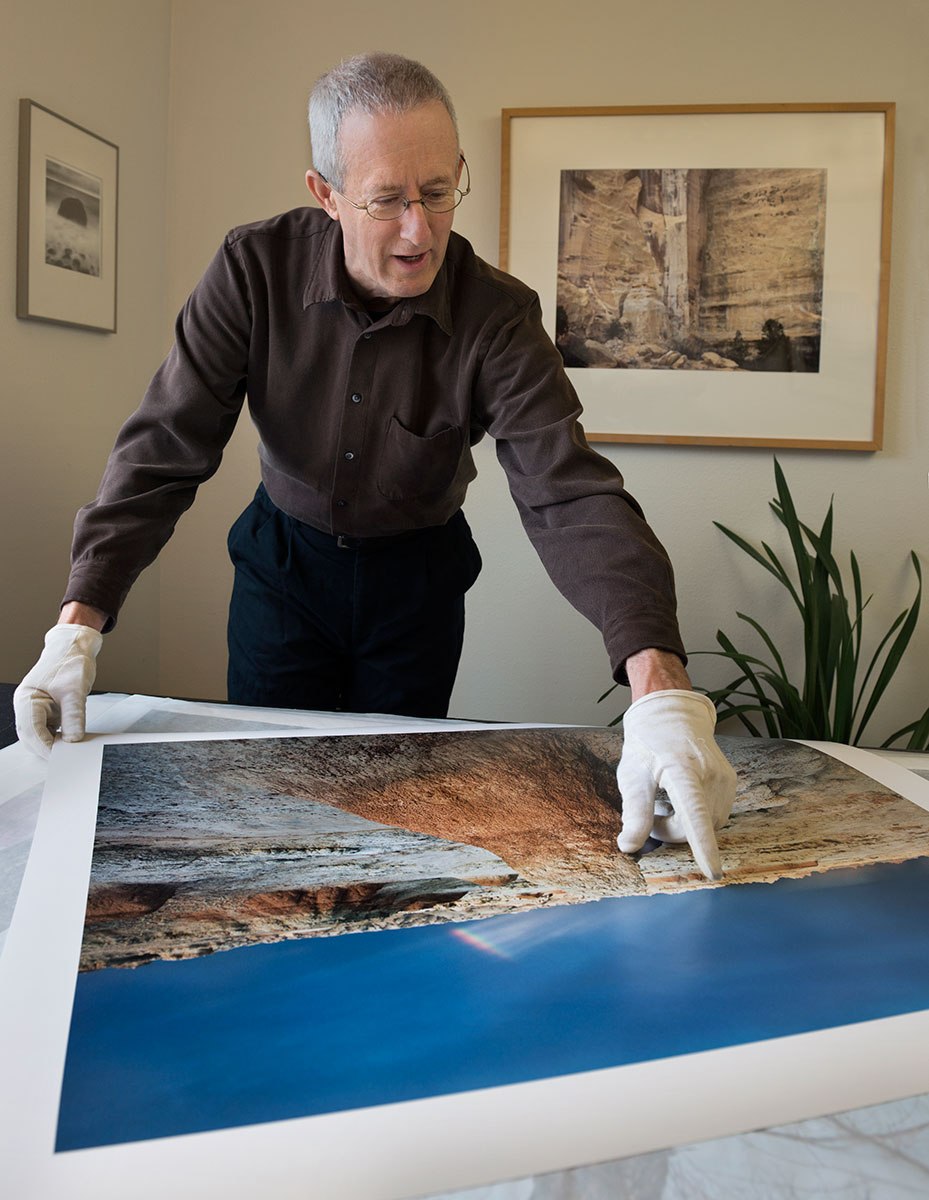Biography

At age 12, Baker was shown how to develop black and white film by his father, an artist and teacher. The process captivated him. Throughout his teenage years, he journaled his interests in geography, geology and weather by "collecting" photographs on his daily walks in the New England woods and along the coast.
While majoring in Meteorology as an undergraduate, he realized his core interest was photography. He began taking photography classes and later attended graduate school at Rhode Island School of Design where he studied with Aaron Siskind, Harry Callahan and visiting faculty Minor White and Lisette Model. In 1975, he received a Master of Fine Arts degree in Photography.
Later, as a tenured faculty member at Edinboro University of Pennsylvania and the University of Texas/Dallas, Baker taught photography and courses exploring the relationship of the visual arts to the humanities. During that time, he co-curated exhibitions and presented symposia on photography, most notably, Photography: The Selected Image, that showcased the work and methods of Aaron Siskind, Harry Callahan, Arnold Newman, Gary Winogrand, Ray Metzger and Laura Gilpin. The exhibition toured museums nationally (1976-78) including the Minnesota Institute of Art and the Houston Museum of Fine Arts.
In 1986, Baker became the Photography Program Director at Anderson Ranch Arts Center near Aspen, Colorado, where for the next decade, he invited hundreds of renowned photographers to teach and participate in workshops. These artists included: Frederic Sommer: Mark Klett; Ralph Gibson; Linda Connor; John Sexton; Sally Mann; John Szarkowski; Stephen Shore; Judy Dater; Mike and Doug Starn, and Mary Ellen Mark. He later became the organization's Executive Director.
At Anderson Ranch, surrounded by established artists who possessed the clarity and conviction needed to build their careers, Baker was inspired to develop portfolios of images and exhibit his work in galleries and museums. He received grants to pursue photographic projects and began to develop a collector base among individuals and institutions. At the same time, he continued to present exhibitions and symposia on environmental and photographic topics including the 1989 conference The Political Landscape with Richard Misrach that brought together photographers, historians, politicians, filmmakers and Native American leaders to explore the impact of cultures on the American Western landscape.
Later, Baker continued his career in art education and artist communities by serving as President of Maine College of Art in Portland, Maine and then as Executive Director of Pilchuck Glass School near Seattle, Washington. Throughout his career, Baker continued photographing the natural landscape, at first exploring New England and Canadian Maritime Provinces, and then traveling extensively to Mexico, across the Intermountain West and through the Canadian Rockies, and more recently, the Pacific Northwest. Using primarily a 4 x 5" field view camera, he worked with black and white negative film, and in the 1980's included color negative and transparency film.
Recently he has begun to use a digital camera. His printing methods have evolved through making silver, dye transfer, Type C and Cibachrome prints to more recently scanning his film images and making digital prints or working directly with digital camera files.
In addition to his photography, Jim has written extensively for regional and national publications, and from 1995 - 2006, his Colorado regional NPR program All About the Arts featured interviews with prominent artists, filmmakers, writers and poets.
Today Baker actively pursues his photography and writing while continuing to support and advise artists' communities.
